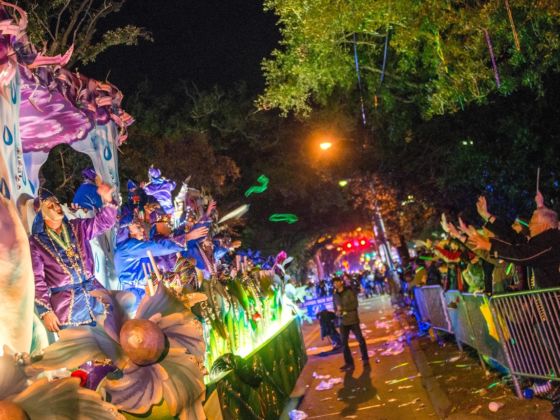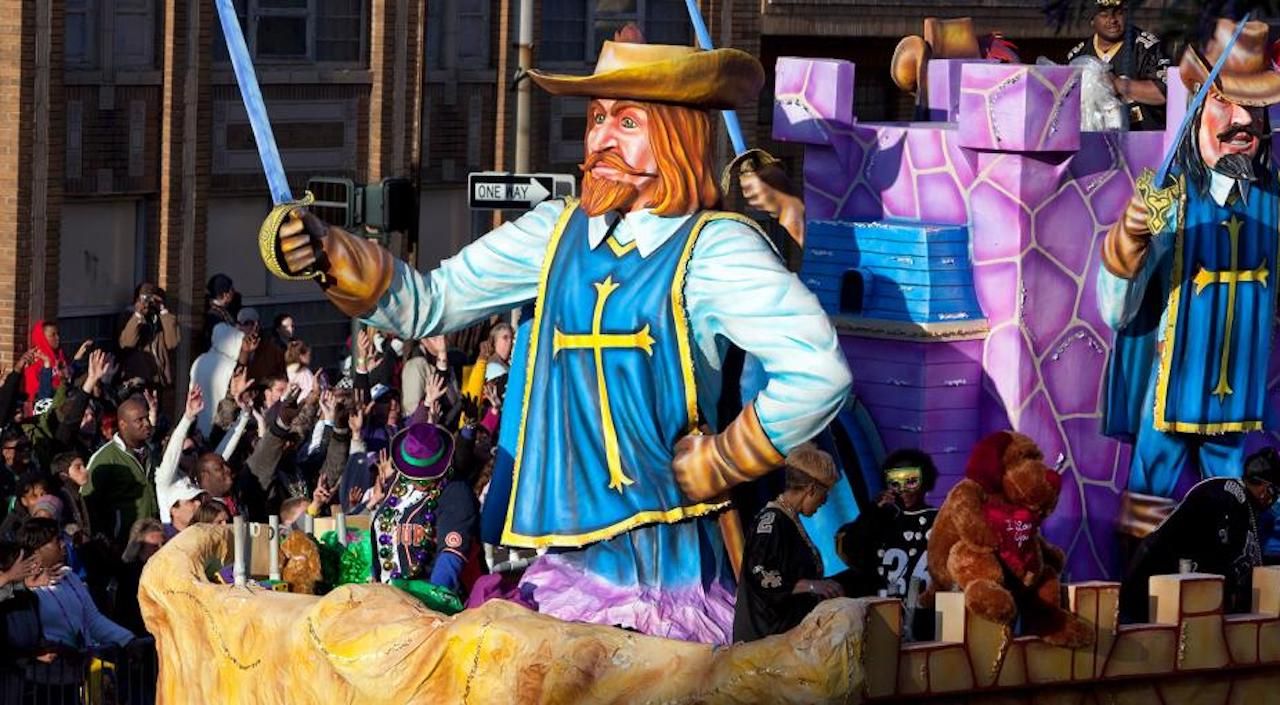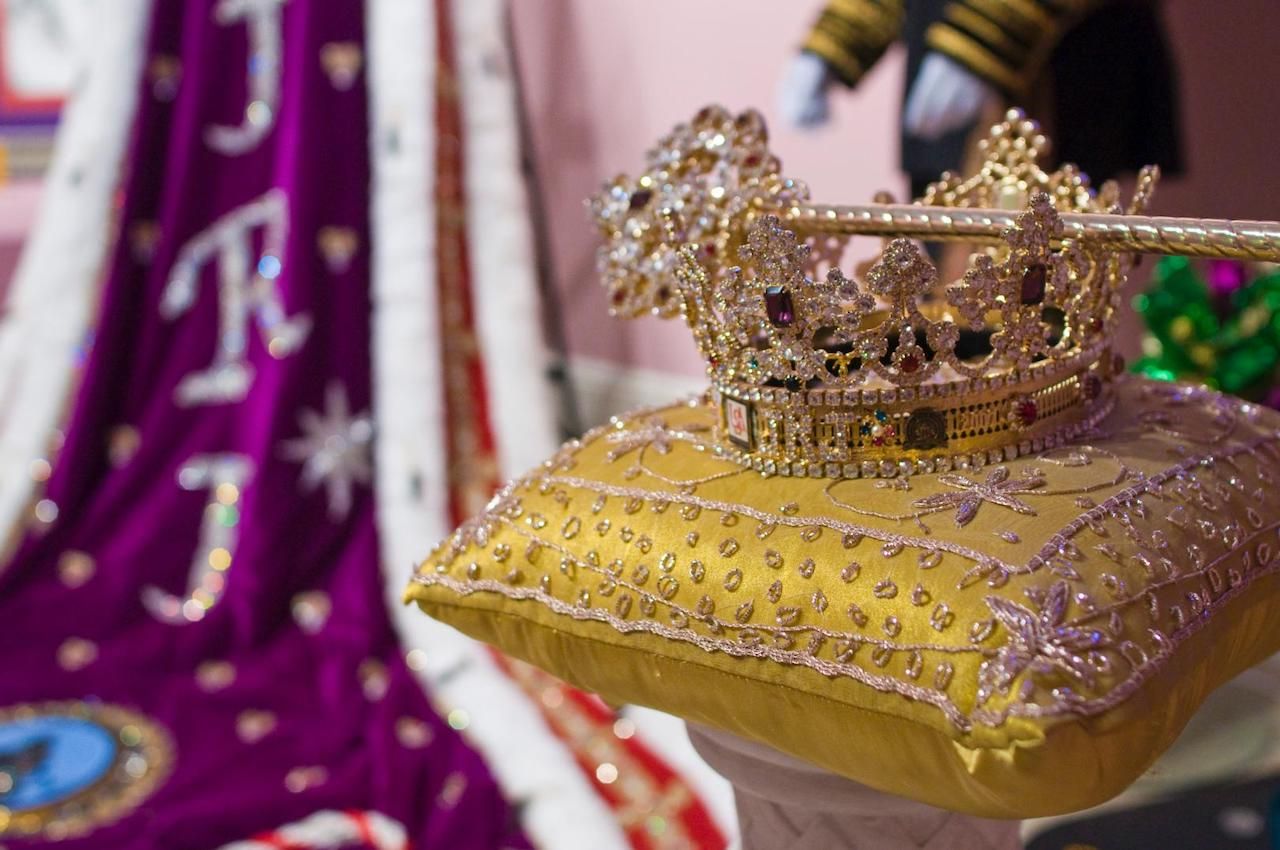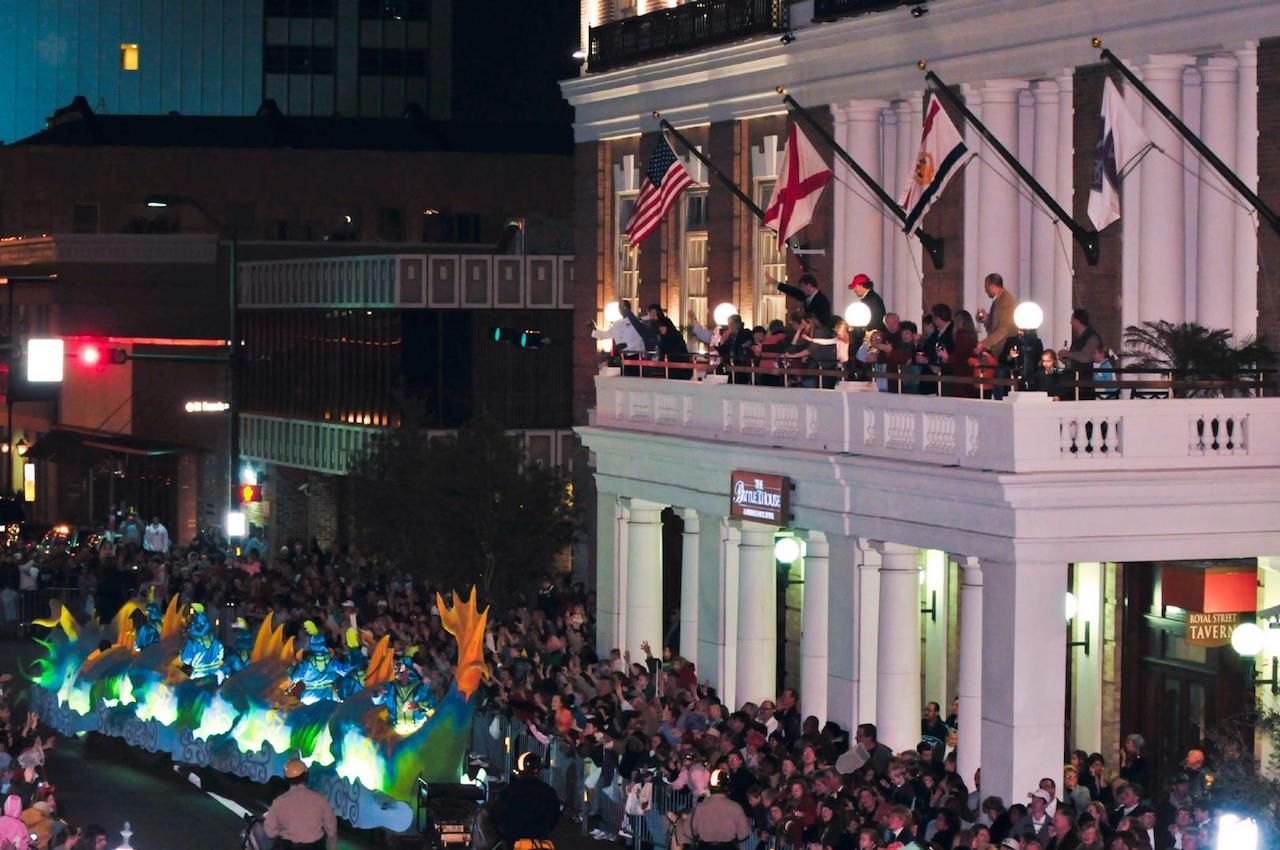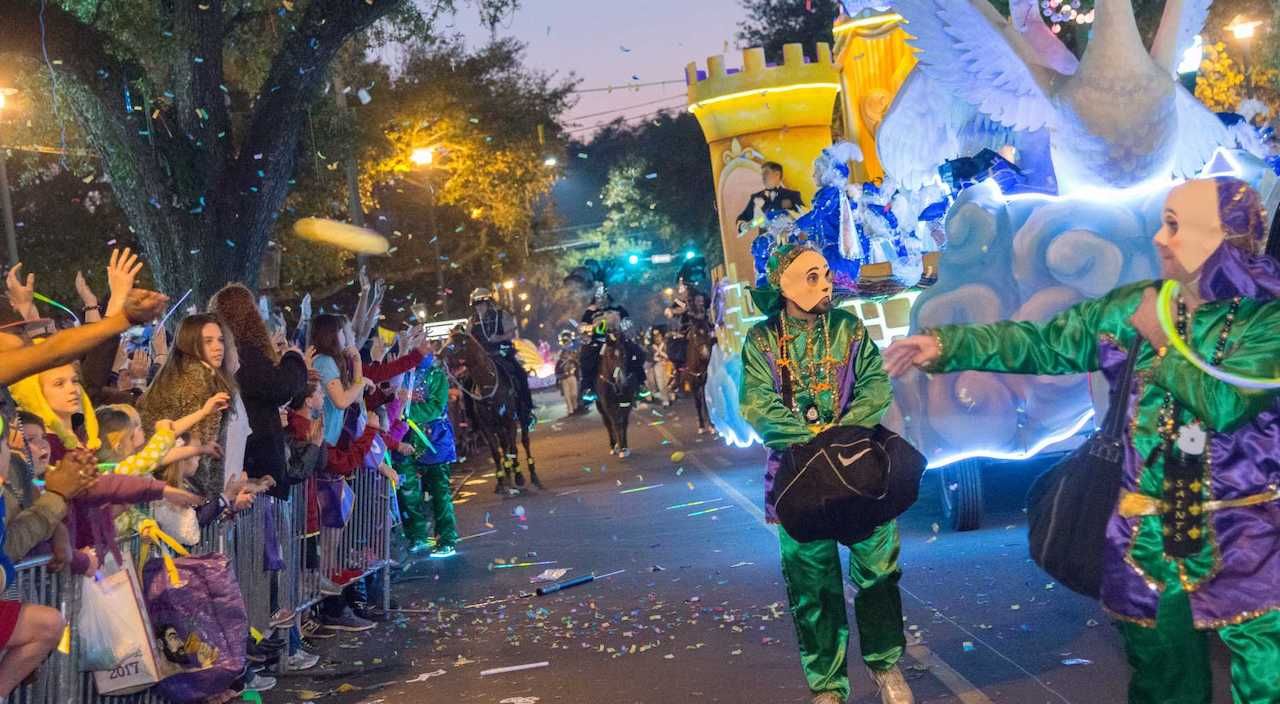Any mention of Mardi Gras in the US usually makes people think of New Orleans. While the Big Easy has the biggest and most famous Mardi Gras party, the first official Mardi Gras in the US actually took place in Mobile, Alabama, in 1703.
Mobilians are proud of being the location for America’s first Mardi Gras. So much so that the state tourism board put up a billboard outside of New Orleans stating in all caps, “You are 114 miles from America’s original Mardi Gras.”
